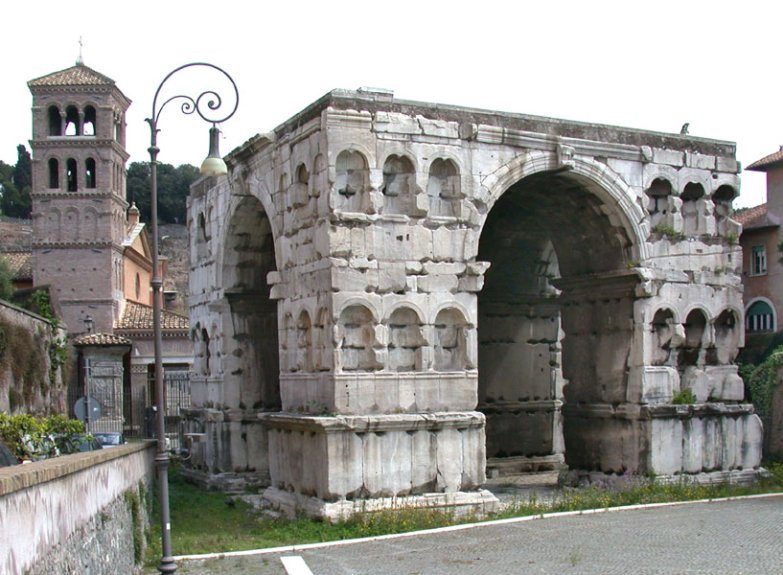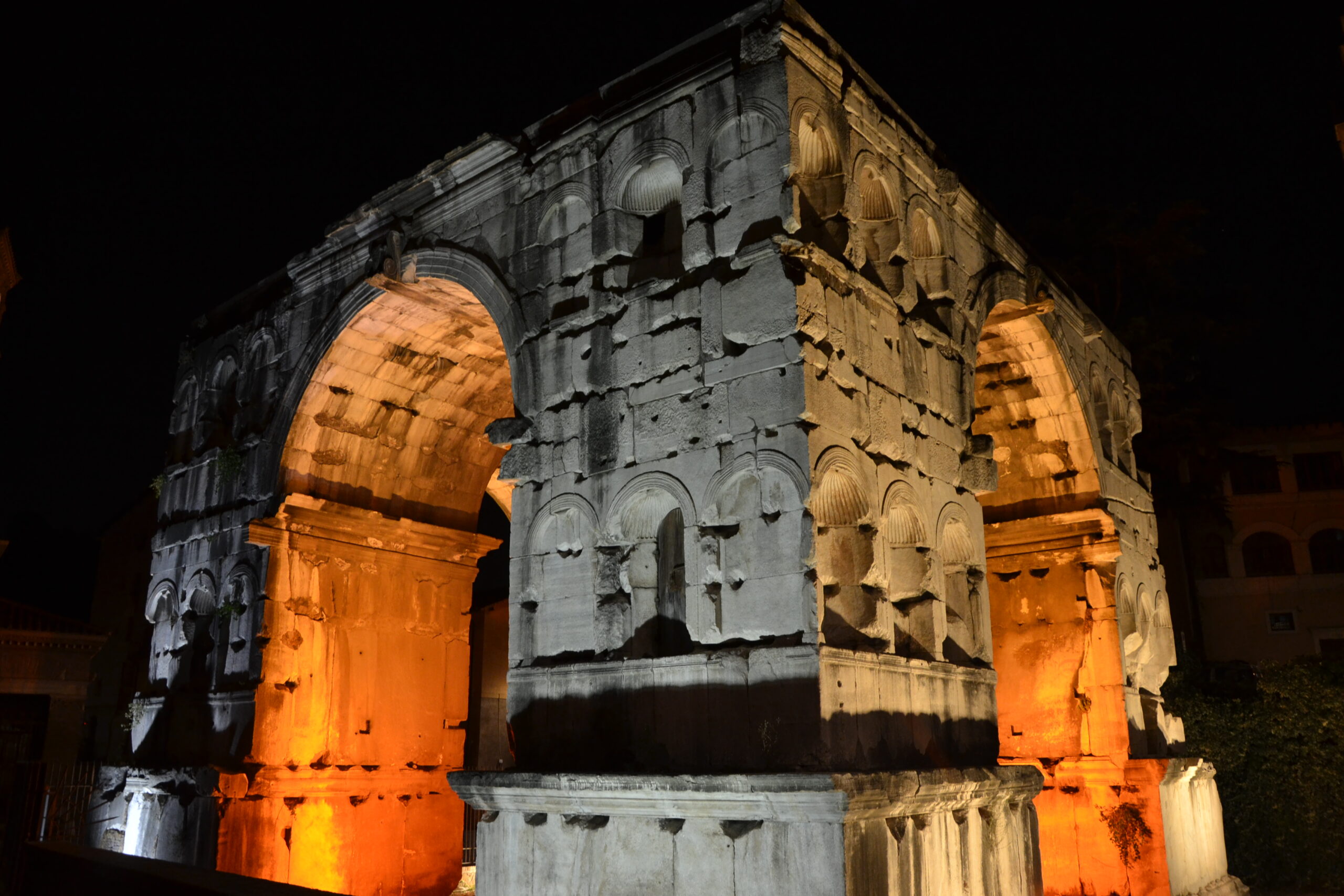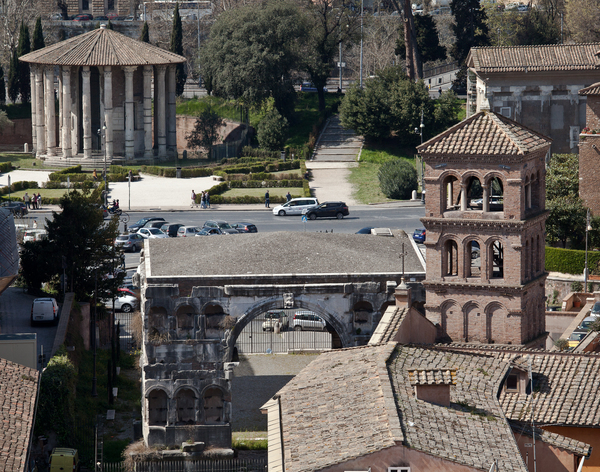Arch of Janus - Arcus Divi Constantini

Arch of Janus is the sixteenth-century name of a triumphal arch in the form of a tetrapylon erected in Rome, in the Constantinian era, whose original name was "Arcus Divi Costantini".

The monument stands on the edge of the Foro Boario, near the church of San Giorgio in Velabro, not far from the Temple of Hercules and the Temple of Portuno. It is one of the rare examples of a tetrastyle preserved to this day. The only other example in Italy is the Arco di Malborghetto, which however was heavily modified in a later period.

It is built largely with marble and materials taken from other previous monuments, towards the middle of the 4th century, therefore with a genesis similar to that of the Arch of Constantine. It must probably be identified with the Arcus Divi Constantini mentioned in the regional catalogs at the Velabrum. The modern name does not refer to the two-faced god Janus, but rather derives from the Latin term ianus, meaning a covered passageway, or doorway.

As the iani witnessed by the sources in the Roman Forum, it was not a triumphal arch, but probably a structure intended for the bankers who worked in the Forum Boarium. The building, which has a square plan and is 12 m high with 16 m on each side, has four massive pillars which support a cross vault. They are built in cement and covered with reused blocks of marble.

Above it must have had an attic floor and a roof perhaps in the shape of a pyramid, whose structure in brick work, which originally must have also been covered in marble, was demolished in 1827 because it was wrongly considered part of the medieval fortification planted above the building Roman by the Frangipane (who had also closed the arches). In the pillars there are many niches which perhaps housed almost life-size statues, there are 12 on each east and west face and 2 on each north and south face and another 10 are fake. In total then 28.

The niches originally had to house statues and were framed by aedicules with small columns, now lost, resting on the cornices, and were covered by a shell-shaped semi-dome carved in the marble blocks of the facing. The only preserved remains of the sculptural decoration are represented by the four female figures on the keystones: the goddess Roma on the eastern side and Minerva on the northern side can be recognized with certainty, while the identification of the other two figures as Juno and Ceres presents greater uncertainties.

The Arch, in addition to having monumental functions, served as a shelter from the inclemency of the weather for the Roman cattle merchants and the money lenders who crowded the Forum. During the Middle Ages, the Roman Frangipane family used it as a fortress, closing its arches; when these works were eliminated, in 1830, the original attic and crowning were also lost, because they were not recognized as works belonging to the original structure.
Map: Arch of Janus - Arcus Divi Constantini
Address: Via del Velabro, 5, 00186 Roma Lazio Italia
Roma (RM) Lazio
Latitude: 41.88929559733115
Longitude: 12.482780814170837
Site: ...
vCard created by: Culturalword
Currently owned by: Culturalword
Type: Monument
Function: Monument
Creation date: 18-08-2023 09:39
Last update: 18/08/2023